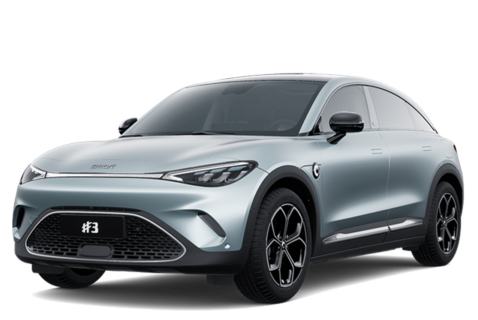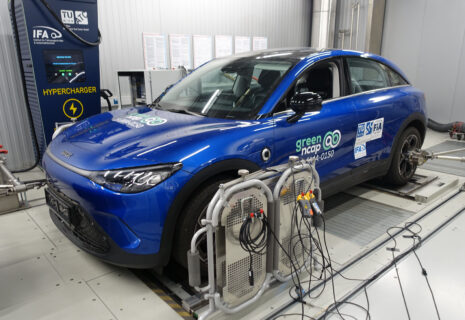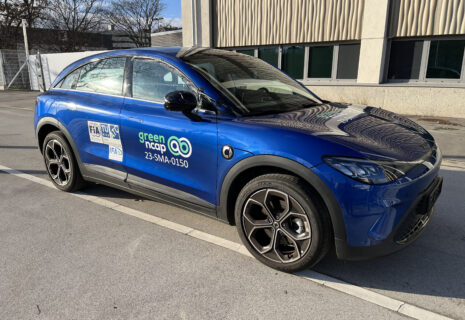smart #3 Pro+ electric RWD automatic
2024
95%
10.0
10
Clean Air Index
9.2
10
Energy Efficiency Index
9.4
10
Greenhouse Gas Index
| Laboratory Tests | NMHC | NOX | NH3 | CO | PN | |
|---|---|---|---|---|---|---|
| 10.010 | Cold Test | |||||
| 10.010 | Warm Test | |||||
| 10.010 | Highway | |||||
| 10.010 | Cold Ambient Test | |||||
| Road Test | ||||||
| 10.010 | On-Road Drive | |||||
| 5.05 | On-Road Short Trip | |||||
| 8.08 | On-Road Heavy Load | |||||
| 5.05 | On-Road Light Load | |||||
| 2.02 | Congestion | |||||
| Laboratory Tests | Energy | |||
|---|---|---|---|---|
| 10.010 | Cold Test | 19.8kWh100 km | ||
| 10.010 | Warm Test | 18.9kWh100 km | ||
| 8.910 | Highway | 27.7kWh100 km | ||
| 8.110 | Cold Ambient Test | 33.5kWh100 km | ||
| Consumption | Driving Range | |||
| Average | 22.1kWh100 km | 359km | ||
| Worst-Case | 33.5kWh100 km | 230km | ||
| Greenhouse Gases | CO2 | N2O | CH4 | |
|---|---|---|---|---|
| 10.010 | Cold Test | |||
| 10.010 | Warm Test | |||
| 9.410 | Highway | |||
| 8.510 | Cold Ambient Test |
Specifications
- Tested Car HESCR1C43PS15XXXX
- Publication Date 02 2024
- Vehicle Class Small Family Car
- Emissions Class Euro 6 AX
- Tyres 245/45 R19
- Mass 1,780 kg
- System Power/Torque 200 kW/343 Nm
- Declared Battery Capacity 65.0 kWh
- Declared Driving Range Overall 435 km City 601 km
- Declared Consumption 16.8 kWh/100 km
- Heating Concept PTC








































































































































Our verdict
The new smart vehicles which are manufactured in China are newcomers to the European market and arrive with a range of attractive electric models in the compact and subcompact segment. Tested here is the smart #3 – a compact SUV with a maximum power of 200 kW and a declared battery capacity of 65 kWh. The mass of the empty vehicle is 1,780 kg. The measured test consumption values are creditable and the vehicle shows good comfort for the passengers in cold and warm environment in its default “comfort” driving mode. A PTC-heater is used for cabin heating, while better-equipped variants come with an additional heat pump. For the battery capacity test the vehicle was charged with 11 kW charging power. With 68.2 kWh, the measured usable battery capacity surpasses the declared figure of 65 kWh, and it should be noted that the manufacturer states the available battery capacity depends on the charging speed. A full battery recharge takes 77.2 kWh from the electricity grid, which results in a reasonable grid-to-battery output efficiency of 88.4 %. Overall, the smart #3 finishes with an Average Score of 95%, easily collects all 5 Green Stars and challenges the popular EV brands in the European market.